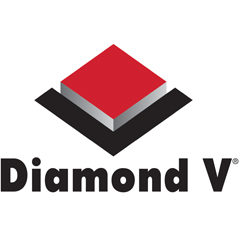2018 Chinese beef production is estimated at 7.3 million metric tons, 58 percent of projected U.S. beef production of 12.4 million metric tons. China has an estimated total cattle herd of 96.85 million head in 2018, slightly larger than the current U.S. herd of 94.4 million head.
In May and June, I met with cattle and meat industry experts in China with the assistance of the U.S. Meat Export Federation offices in Beijing and Shanghai. A cattle industry expert in Beijing provided an excellent summary of cattle production in China. The bulk of cattle production consists of an assortment of native beef breeds, known collectively as Yellow cattle, concentrated in the North China Plain, the northeast and the extensive grazing lands of the northwest. The Chinese cattle industry also includes yak production on the high Tibet plateau in the southwest and water buffalo production in the south and southeast.
The central region of the North China Plain is the largest beef production region and includes the provinces of Henan, Hubei, Hunan, Shandong and Jiangxi and surrounding regions. I traveled across these provinces and yet saw very few cattle. Cattle production takes place in and around intensive crop production, utilizing a diverse set of crop residues and residual forage from roadsides, ditch banks, farmsteads, etc. One does not see big herds of cattle grazing large pastures.
Most producers in this region usually own less than 10 head of cattle with perhaps two to five cows. Larger cow herds of up to several hundred head can be found in the grazing lands of northwest China. Productivity is relatively low with cows typically producing two calves every three years. Though dual-purpose production was once more common, dairy production has specialized, and most beef production today is solely for meat.
Yellow cattle account for roughly 70 percent of beef production with a small, but growing, use of European breeds in place of native cattle; crossbreeding of Yellow cattle and imported breeds; and development of composite breeds of Yellow cattle and European breeds. In mountainous areas, the moderately sized Yellow cattle are better adapted and remain the predominant cattle type. Weaned calves move into larger growing and finishing operations. Roughly 60 percent of cattle are finished using corn-based rations in feedlots that range in capacity from a few hundred to a few thousand head, with the largest feedlots up to 20,000 head.
Beef production in China today continues mostly with traditional systems used for many years. The beef industry has so far received relatively little attention from the Chinese government compared to pork, poultry and dairy, where large investments in modern, large-scale production facilities are rapidly changing and increasing production. It appears that Chinese cattle and beef production has potential to be significantly enhanced with complementary use of different genetics, improved management and larger-scale production systems.
However, increased beef production in China will face challenges. Beef production has the greatest potential to expand in the major agricultural regions of central China where use of resources for cattle production will compete with increasing demand for crops and other agricultural production to meet the relentlessly growing food demand in China.
The drier, extensive grazing areas of the west and northwest face less competition from other agricultural production but are inherently limited by climate and productivity of the land and suffer from degradation of some grazing areas. Exactly how much and how fast beef production in China will grow will depend on beef demand in the country. The next article will look at beef consumption and rapidly growing beef imports in China. ![]()
Derrell S. Peel is an Oklahoma State University Extension livestock marketing specialist. This originally appeared in the July 23, 2018, OSU Cow/Calf Corner newsletter.








